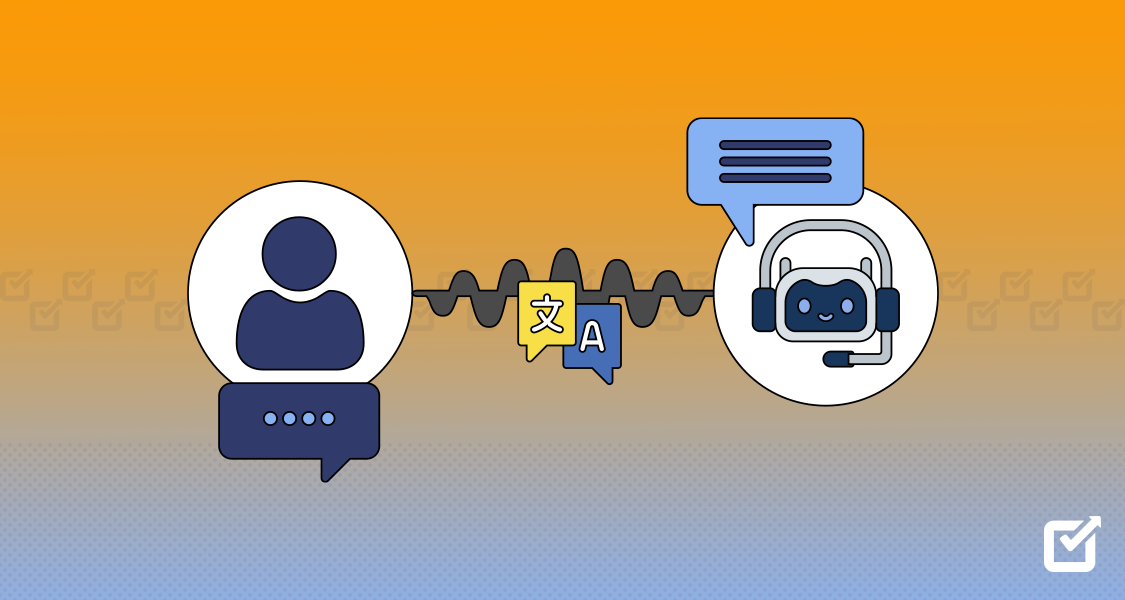Conversational artificial intelligence, or AI as we fondly call it, has come a long way in recent years.
From simple chatbots that could only respond with pre-programmed answers, we now have advanced virtual assistants like Claude that can have meaningful and helpful conversations—2024 promises to be an exciting year for further advancements in this field.
As humans, conversational AI chatbots can help us a lot, and it comes naturally to us. We use it in our daily lives to connect with friends, family, colleagues, and even strangers.
The future of the digital world, especially social media, is about fostering authentic connections. Combining the power of conversational AI with helpful social media management tools like Social Champ can help you achieve just that, creating a more engaging and human-like experience for your followers.
The possibilities for usage are endless – seeking information, getting recommendations, having light-hearted banter, and more.
What Is Conversational AI?
Conversational AI refers to advanced computer systems that can simulate intelligent conversation with humans using natural language. It enables two-way communication between human users and virtual assistants that can interpret language input, process commands, and generate human-like responses in context.
Unlike traditional chatbots that only engage with pre-determined scripts, conversational AI chatbots involve self-learning algorithms that understand linguistic nuances, identify intents, discern contexts, and respond accordingly in an organic, flowing dialogue.
With capabilities of comprehending speech and text input, processing emotions and sentiment, and learning from conversations over time, sophisticated virtual assistants powered by conversational AI can have meaningful and productive discussions on a range of topics just as humans would.
The goal is to create AI systems that can assist with tasks, provide company, and appear as a helpful and empathetic conversational partner from the user’s perspective.
As the technology matures, human interactions with conversational AI are set to become ubiquitous across domains, effectively delivering services, information, and companionship to people in their daily lives through fluid, adaptive, and increasingly humanizing communication.
Can’t think of winning captions?
Sign up to Social Champ today and use AI Champ Suite to curate captions and other marketing copies.
How Does Conversational AI Work?
Conversational AI is a technology that makes it possible for people and robots to communicate using natural language. It changes the way we interact with digital systems by making text or voice discussions fluid.
Through an in-depth investigation, we dissect Conversational AI’s inner workings without resorting to technical jargon, providing insight into its core principles.
Natural Language Processing (NLP)
Natural Language Processing (NLP), an area of artificial intelligence, is the foundation of conversational artificial intelligence. With the use of natural language processing (NLP), machines can comprehend, interpret, and react to human language in a naturalistic and intuitive fashion. To enable the system to understand human inputs, it parses phrases, identifies things, and understands the context of a discussion.
Intent Recognition
Conversational AI chatbot systems excel at recognizing user intent. They employ advanced algorithms to analyze the structure and content of user inputs, discerning the underlying purpose or goal behind each interaction. This capability enables the system to provide relevant and contextually appropriate responses, creating a more meaningful dialogue.
Dialogue Management
Advanced dialogue management is necessary for an effective conversational AI chatbot to provide a smooth conversational flow. This part promotes information exchange by monitoring context, finding out user preferences, and directing the conversation in the direction of the user’s intended result. For a dialogue to flow naturally and be interesting, dialogue management is essential.
Speech Recognition (For Voice-Based Interactions)
Speech recognition plays a central role in conversational AI that is voice-centric. Through the use of this technology, spoken language is translated into text, enabling the system to understand and carry out spoken commands. Comprehensive speech recognition skills are essential to improving user experience as voice interfaces become more common.
User Context and Personalization
The goal of conversational AI systems is to mirror human memory by keeping context relevant to the entire discourse. These systems can provide a personalized experience by storing user preferences, previous interactions, and important data. Creating a conversational interface that is more user-centric and engaging needs this context understanding.
Feedback Loops and Continuous Learning
Conversational AI is dynamic; it changes with time. These systems can learn from user interactions, adjust to shifting linguistic patterns, and develop over time thanks to feedback loops. The AI is kept current and competent in comprehending and reacting to user inputs through this ongoing learning process, which is frequently fueled by machine learning algorithms.
To put it briefly, Conversational AI functions by smoothly merging different technologies to produce an intuitive user experience that emulates real-world discussions. A more intuitive and humane contact with digital systems is made possible by the subtleties of Conversational AI, which range from understanding nuances of language to adjusting through continuous learning.
Benefits of Conversational AI
Many industries can benefit from conversational AI, which improves user experiences and streamlines communication. The following are the main benefits:
Enhanced User Engagement
- Conversational AI fosters more engaging user interactions, providing a natural and intuitive interface for communication.
- Users can interact with systems using everyday language, promoting a more conversational and user-friendly experience.
24/7 Availability
- Unlike human counterparts, Conversational AI operates 24/7, ensuring round-the-clock availability for users.
- This constant accessibility enhances customer support, reduces response times, and accommodates users in different time zones.
Scalability and Efficiency
- Conversational AI systems can handle a high volume of simultaneous interactions, offering scalability and efficiency.
- Businesses can efficiently manage a large number of queries and interactions without compromising quality.
Personalization
- Conversational AI platforms can tailor interactions based on user preferences and historical data.
- Personalized experiences create a sense of individualization, improving customer satisfaction and fostering brand loyalty.
Time and Cost Savings
- Automated interactions through Conversational AI reduce the need for manual intervention, saving time and labor costs.
- Repetitive tasks can be automated, allowing human resources to focus on more complex and value-added activities.
Improved Customer Support
- The conversational AI platform enhances customer support by providing instant responses to frequently asked questions.
- It can troubleshoot issues, guide users through processes, and escalate to human agents when necessary, improving overall support efficiency.
Data Insights and Analytics
- Conversational AI generates valuable data insights by analyzing user interactions.
- Businesses can leverage this data for a better understanding of user behavior, preferences, and areas for improvement.
Accessibility
- Conversational AI breaks down language barriers, making services accessible to users who may prefer or require communication in their native language.
- It also accommodates users with disabilities by providing alternative means of interaction.
Seamless Multichannel Integration
- Conversational AI can seamlessly integrate with various communication channels, including websites, mobile apps, and messaging conversational AI platforms.
- This flexibility allows users to engage through their preferred channels, enhancing convenience.
Continuous Learning and Adaptation
Conversational AI systems continuously learn from user interactions, adapting to changing language patterns and preferences. – This ensures that the AI remains relevant and effective over time, evolving alongside user needs.
In conclusion, conversational AI has numerous applications in a variety of fields, including cost savings, enhanced user engagement, scalability, personalization, and insightful analysis. Conversational AI’s influence on user experiences and operational efficiency is expected to increase as technology develops.
Related Article: Artificial Intelligence in Social Media – A Deep Insight!
Types of Conversational AI
There are several varieties of conversational AI, each intended to meet particular requirements and situations. The following are some varieties of conversational AI:
Chatbots
- Chatbots are text-based conversational agents that interact with users through messaging interfaces.
- They are commonly used for customer support, lead generation, and handling routine queries.
Voice Assistants
- Voice assistants, such as Amazon Alexa, Google Assistant, and Apple’s Siri, leverage speech recognition technology to enable voice-based interactions.
- They assist users with tasks, answer questions, and control smart devices through natural language commands.
Virtual Assistants
- Virtual assistants are more sophisticated conversational AI applications that can handle complex tasks and provide personalized experiences.
- They often integrate with other systems, assisting users with scheduling, information retrieval, and task automation.
- Tools like Social Champ’s AI Suite are an excellent example in this regard. Where Social Champs scheduling tool offers its users valuable insights and posting time suggestions, its AI Content Wizard tool generates catchy captions within seconds, delivering a one-stop satisfying solution to all its users.

Social Champ
Messaging Apps Integration
- Conversational AI integrated into messaging apps allows businesses to engage with users directly within popular platforms like WhatsApp, Facebook Messenger, or Slack.
- This type facilitates communication where users already spend a significant amount of time.
Interactive Voice Response (IVR) Systems
- IVR systems use voice prompts, keypad inputs, and IVR automated answers to interact with users over the phone.
- They are commonly employed in customer service for tasks like bill payment, appointment scheduling, and information retrieval.
AI-Powered Customer Support
- Conversational AI is widely used in customer support systems to automate responses to common queries and guide users through troubleshooting processes.
- It helps improve response times and provides a more efficient support experience.
Social Media Chatbots
- Chatbots integrated into social media platforms enable businesses to engage with users directly through messaging.
- They can handle inquiries, provide information, and even facilitate transactions without users leaving the social media environment.

My AI Chatbot E-commerce Assistants
- Conversational AI is utilized in e-commerce to assist users with product recommendations, order tracking, and addressing customer queries.
- It enhances the overall shopping experience by providing personalized assistance.
Healthcare Chatbots
- Chatbots in healthcare assist users in scheduling appointments, providing health information, and answering medical queries.
- They contribute to improving healthcare accessibility and patient engagement.
Language Translation Bots:
Language translation bots use NLP and machine translation to facilitate conversations between users who speak different languages. – They are particularly useful in international business communication and social interactions.
Educational Chatbots:
Chatbots are integrated into educational platforms to provide instant feedback, answer questions, and assist students in their learning journeys. – They enhance the learning experience by offering personalized support.
These different types of conversational AI show the technology’s flexibility and adaptability in a range of settings, offering solutions for a wide range of applications and user interactions.
Related Article: Top 15+ AI Tools for Social Media in 2025
What Is the Difference Between Chatbots and Conversational AI?
Chatbot vs conversational AI are often used interchangeably, but there are some key differences. Chatbots are computer programs designed to have conversations with humans using text or voice.
They are programmed with predefined scripts and rules that allow them to respond to specific phrases or questions. Many chatbots match keywords and provide canned responses. They have limited ability to understand context or have an intelligent dialogue.
Conversational AI refers to more advanced systems that can have more natural, free-flowing conversations. These systems use machine learning to understand language and context better.
Unlike rigid chatbot scripts, conversational AI can interpret questions more broadly and provide responses that are more appropriate and human-like.
Conversational AI Statistics for 2025
The conversational AI market has been experiencing significant growth. According to Markets and Markets, by 2024, the conversational AI market is forecasted to increase from USD 10.7 Billion in 2023 to USD 29.8 Billion by 2028.
Opening new frontiers of possibilities from hyper-personalization to predictive recommendations, AI-driven voice and chat interfaces promise more humanized digital communications at scale in the years ahead. However, challenges remain around accuracy, privacy, and security as conversational AI evolves from narrow task-specific bots to more general artificial intelligence.
Examples of Conversational AI
Conversational AI refers to advanced systems that can have natural, free-flowing dialogues and interactions with humans. Unlike rigid chatbots, conversational AI aims to understand context and meaning to respond more appropriately during open-ended conversations.
Some conversational AI examples include:
- Digital assistants like Siri, Alexa, and Google Assistant can answer questions, take requests, and control smart devices through voice-based conversations. Their abilities go beyond predefined scripts to handle more complex interactions.
- Customer service chatbots and call center software that use natural language processing to address inquiries with no need to always escalate to a human agent. A noteworthy mention in this type is Amazon. Amazon deploys a virtual assistant as its frontline for customer service, utilizing a system of prompted questions and leveraging past order data to proactively offer personalized recommendations and streamline the interaction.

- AI companions like Replika are designed to be emotive conversationalists on topics ranging from mental health to everyday chatter. Their goal is to create connections through conversations.
- In a role-playing video game, players interact with a gaming companion who provides guidance, reacts to in-game events, and engages in dynamic conversations. The gaming companion’s dialogue evolves based on the player’s choices and is one of the worth mentioning conversational AI examples.
The common thread is enabling AI systems to handle the fluid, back-and-forth nature of human conversations beyond just keyword matching. The technology is still evolving but shows promise for the future.
Conversational AI Best Practices
Here are some best practices for AI conversational systems:
Focus on the User Experience
Design the conversation flow and responses to what would be most helpful and natural from the user’s perspective. Allow for flexibility rather than rigid scripting. Test conversations with real users and continue refining.
Active Listening
Program the AI to pick up on cues from users’ words and emotions to better understand the context and respond appropriately. Ask clarifying questions rather than assume.
Relevance, Not Just Responses
Instead of trying to have canned responses to every query, strive for responses that move the conversation forward and relate to what the user cares about. Have a goal beyond just replying.
Evolve Through Machine Learning
Leverage machine learning models like LSTM neural networks so past conversations make the AI better at future conversations by improving its language processing and response strategies.
Transparency
Be clear when users are conversing with AI versus a human. Ethics require properly setting expectations on abilities and limitations to build trust.
Fail Gracefully
When the AI does not have sufficient confidence in its response, it acknowledges limitations and provides options to get the correct information or contact channel.
Empower Humans
Position conversational AI as assisting humans rather than replacing them. Human oversight of model training can also help address errors and biases.
By focusing on conversation quality over quantity and pairing machine learning with human guidance, conversational interfaces can deliver value while avoiding missteps. The goal is productive, ethical AI conversations.
Conclusion
At the end of our Conversational AI Guide for 2024, it is obvious that the field of human-machine interaction is set for significant advancement. The complexities of conversational artificial intelligence have been untangled by this thorough guide, which also highlights the technology’s advantages and applications and predicted future developments.
AI Conversational has the potential to completely change the way we interact with technology, from advanced natural language understanding to the incorporation of AR, VR, and IoT.
The focus on user privacy, ethics, and ongoing learning highlights the dedication to developing AI systems that react intelligently and by human values.
















